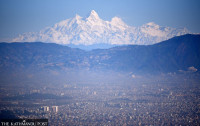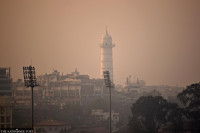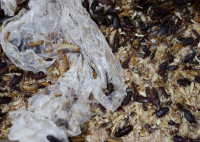Climate & Environment
Conference of the birds
In mid-June, from a height of nearly 5,000 metres, a gaggling colony of bar-headed geese descended to the Jagdishpur reservoir in Kapilvastu. They were followed by the Eurasian coot, green sandpiper, common greenshank, and temminck’s stint—all migratory birds that travel thousands of kilometres to arrive in the Tarai.
Manoj Paudel
In mid-June, from a height of nearly 5,000 metres, a gaggling colony of bar-headed geese descended to the Jagdishpur reservoir in Kapilvastu. They were followed by the Eurasian coot, green sandpiper, common greenshank, and temminck’s stint—all migratory birds that travel thousands of kilometres to arrive in the Tarai.
Over decades, the Jagdishpur reservoir has become a major destination for migratory birds, says Hem Sagar Baral, a bird enthusiast and the author of a number of books on birds and wildlife in Nepal. As the seasons get colder to the north, more species are migrating south for the winter. Newcomers at Jagdishpur include the common pochard, tufted duck, little grebe, great cormorant, common teel, gadwell, red-crested pochard, Eurasian wigeon and the ruddy shelduck.
The bronze-winged Jacana Photo: Manoj Paudel
These birds come from as far away as Siberia, Russia, China, Mongolia, Turkmenistan, Kyrgyzstan and the Middle East, says Dinesh Giri, another bird enthusiast. They fly anywhere between 3,000 to 5,000 kilometres. While some take two to three days to arrive, flying without rest, others take up to a week, stopping along the way. Out of 150 species of migratory winter birds, 65 stop at Jagadishpur, says Giri. Endangered species like the cotton pygmy goose, garganey, bar-headed goose, black-headed ibis, pheasant-tailed jacana, red-crested pochard, northern shoveler, spot-billed duck and falcated duck can all be found at this reservoir.
The black-headed Ibis. Photo: Manoj Paudel
“No other lake in Nepal provides shelter to as many birds as Jagadishpur,” says Baral. “Every year, nearly 25,000 birds stop here. That’s why it’s so important to conserve this site.”
Given its importance to migratory species, the 156-hectare Jagdishpur reservoir was enlisted on the Ramsar List of Wetlands of International Importance in 2003. Every year, students from Australia come to Jagdishpurto study the bird and wildlife species. Locals believe that this reservoir could become a premier tourist attraction, not just for bird watchers and wildlife enthusiasts but also for casual tourism. Thousands of birds frolicking in the water, searching for food and raising their young are a sight to behold.
The great cormorant. Photo: Manoj Paudel

At the Jagdishpur Reservoir, thousands of birds gather every year on their migratory routes. From the 65 species of birds that visit Jagdishpur every year, a significant number are endangered. Photo: Manoj Paudel




 8.12°C Kathmandu
8.12°C Kathmandu













